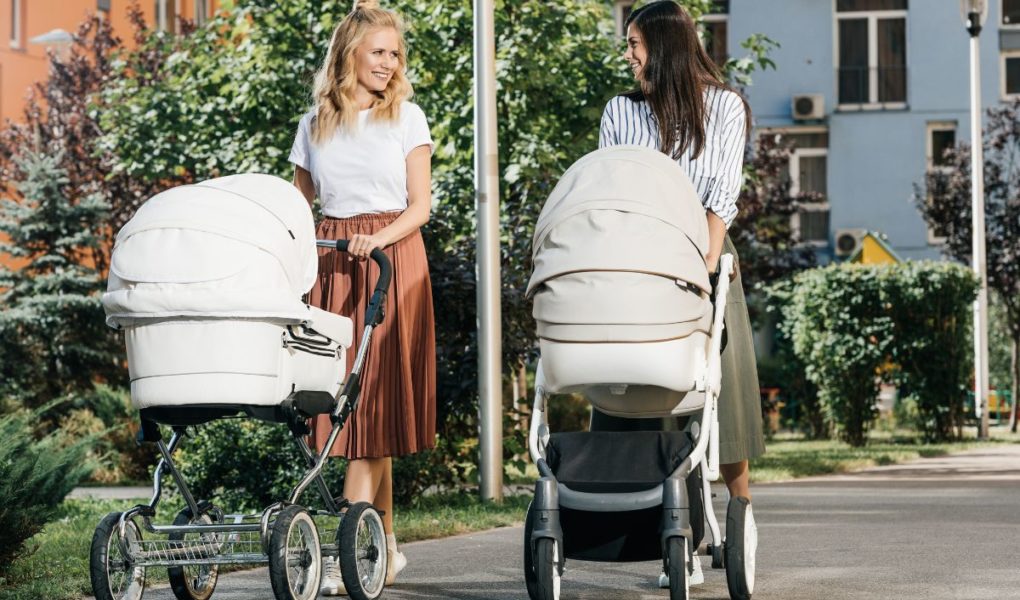Parents always look for the best way to take their children on a stroll, whether through the park, mall, or neighborhood. The most commonly used aids for this are prams and strollers. Although these terms are often used interchangeably, the two have significant differences.
In this article, we’ll delve into the distinctions between prams and strollers, exploring design, usability, safety features, and price range to help parents make an informed choice.
Main Differences Between Pram vs Stroller
- Prams are designed for lying flat and providing a comfortable sleeping environment for newborns, whereas strollers are usually adjustable to accommodate various sitting and reclining positions for older infants and toddlers.
- Prams often feature a luxurious and elegant design, whereas strollers focus more on functionality and may offer a more modern, streamlined appearance.
- Prams are generally bulkier and heavier due to their sturdy construction, whereas strollers are often lightweight and designed for easy portability.
- Prams are typically suitable for smooth surfaces and leisurely walks, whereas strollers can be adapted for different terrains, including unique models for jogging or city use.
- Prams tend to come with a higher price point, reflecting their quality materials and design, whereas strollers are available in a wide range of prices to suit various budgets.
Prams Overview
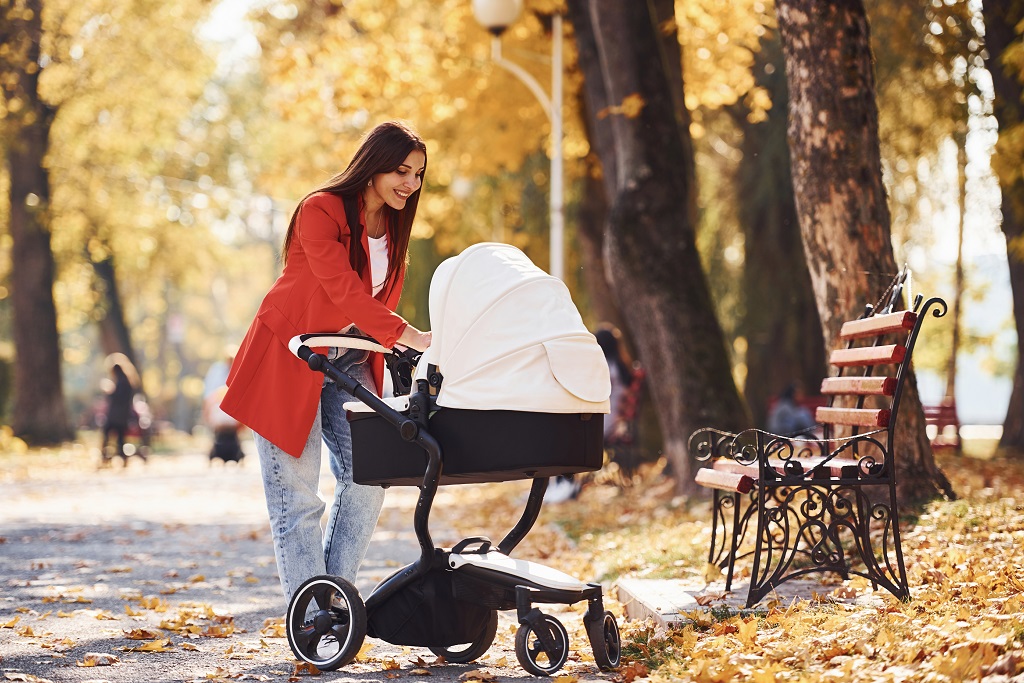
Design and Structure
A pram, short for “perambulator,” is designed for newborns and infants. It has a spacious sleeping area allowing the baby to lie comfortably. Most prams have large wheels, and the top is often covered with a canopy to shield the baby from sun and rain.
Usability and Functionality
Since prams are created with newborns in mind, they offer a comfortable space for sleeping. They’re more substantial and cumbersome, making them slightly more challenging to transport and store. Prams are best suited for smooth terrains and long, leisurely walks.
Safety Features
Prams usually have robust construction, with substantial support and deeper sides to ensure the baby’s safety. The horizontal sleeping position is ideal for newborns, minimizing posture-related risks. Many prams also include hand-operated brakes for added control.
Price Range
Prams are typically more expensive due to their solid construction and luxury features. They’re considered an investment for those first few months of a baby’s life and often reflect higher craftsmanship and materials.
Materials and Durability
Prams are typically made from robust, high-quality materials, such as reinforced steel and luxurious fabrics. The sturdy construction often incorporates a broader wheelbase, larger wheels, and robust suspensions to handle different terrains.
Weight and Portability
Prams tend to be more substantial and are not usually built with portability in mind. Folding them can be more cumbersome and take up more trunk space, which could be a consideration for those using public transportation or with smaller cars.
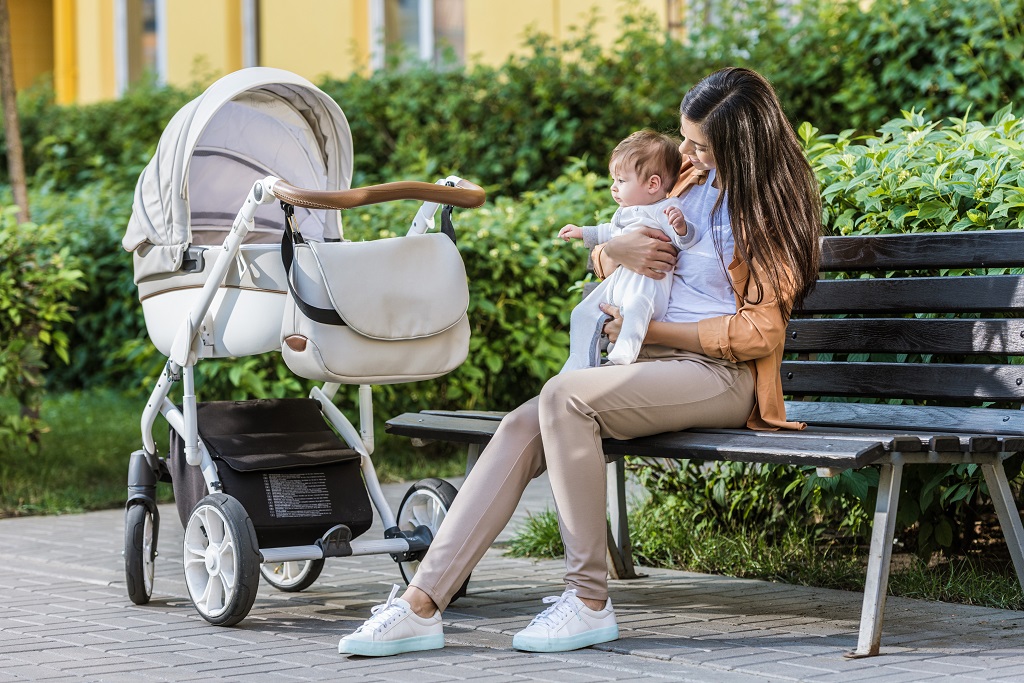
Prams Pros and Cons
Pros
- Comfort for Newborns: Designed for lying flat, offering a comfortable and safe sleeping environment for newborns.
- Sturdy Construction: Often built with high-quality materials, providing stability and durability.
- Elegant Design: Often comes with a luxurious appearance, appealing to those who value aesthetics.
- Safety Features: Offers deeper sides and solid support, ensuring safety for infants.
- Potential Resale Value: Quality prams may retain good resale value and can be passed down through generations.
Cons
- Limited Usage: Primarily suitable for newborns and younger infants, limiting its useful lifespan.
- Bulkier: Generally heavier and takes up more space, making it less convenient for travel or storage.
- Higher Cost: Typically more expensive due to luxury features and materials.
- Not Versatile: It may not be suitable for rough terrains or jogging.
Strollers
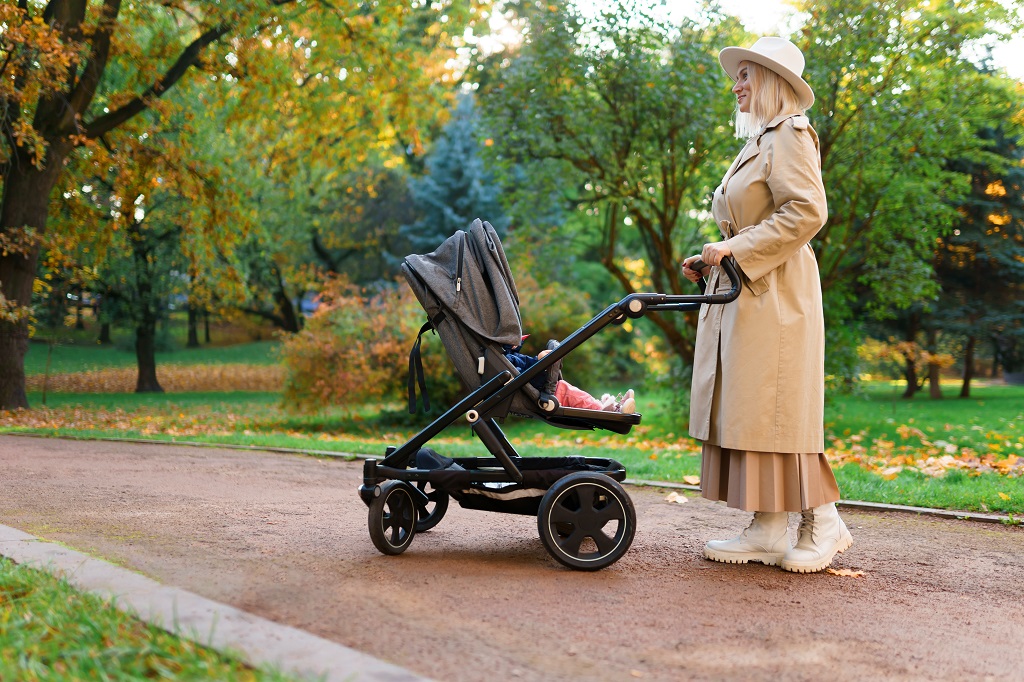
Design and Structure
Strollers, however, are designed for slightly older babies who can sit up. They usually come with adjustable seats that can recline to varying degrees but are more upright than the flat layout of a pram. Strollers are more compact and are typically built for maneuverability.
Usability and Functionality
Strollers are more versatile and are designed for the baby’s growth phase, accommodating children from infancy through toddler years.
Lightweight and easy to fold, they’re perfect for quick trips and are more adaptable to various terrains and situations, including crowded places.
Safety Features
Strollers often come with five-point harness systems that secure the child in an upright or reclined position. They’re also equipped with foot-operated brakes and lockable front swivel wheels. Some strollers have added suspension systems for smoother rides, though they may lack the sturdy construction of a pram.
Price Range
Strollers offer a wide range of prices, from budget-friendly options to high-end models with extra features. Since they cater to a broader age range, the pricing reflects versatility and often focuses more on convenience than luxury.
Materials and Durability
Strollers, while often durable, are designed for compactness and convenience. Materials used may vary from heavy-duty metals to lightweight alloys, depending on the model’s focus (travel, jogging, etc.).
Weight and Portability
Strollers generally weigh less, and many are designed to be folded easily with one hand. This makes them highly portable, ideal for those frequently on the move and who require a system that can be quickly packed into a car or carried onto public transport.
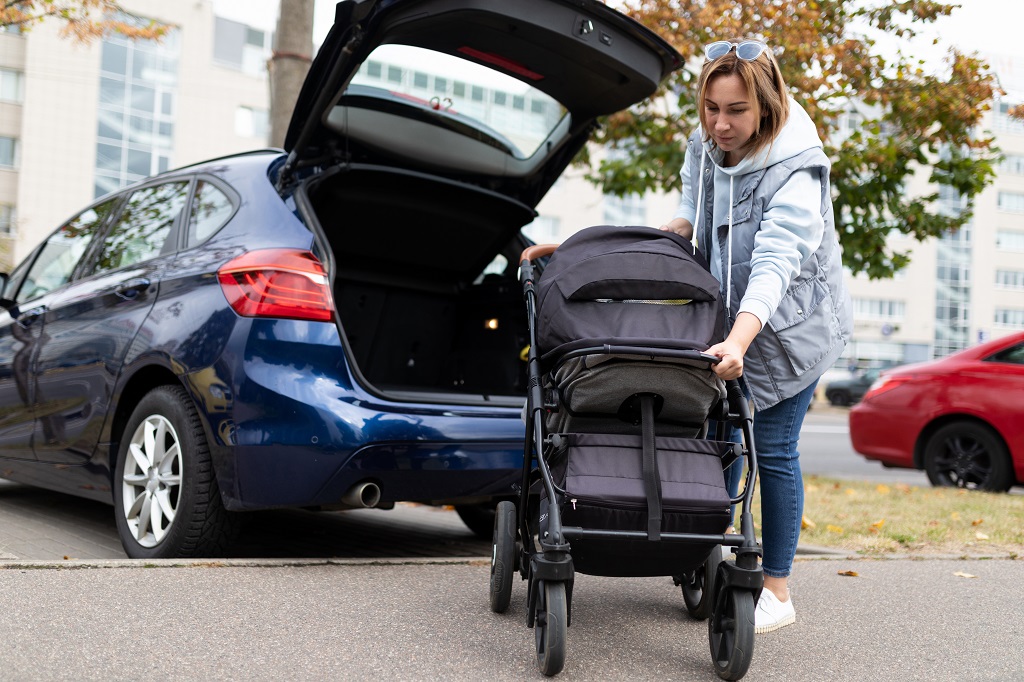
Strollers Pros and Cons
Pros
- Versatility: Suitable for a wide age range, growing with the child from infancy to toddler years.
- Lightweight: Often more compact and lighter, making them easier to handle and transport.
- Adjustable Features: Many strollers have reclining seats and flexible components for various needs.
- Range of Prices: Available in various price ranges, from budget-friendly to high-end.
- Multi-Terrain Usage: Some models are designed for different terrains, including jogging strollers for active parents.
Cons
- May Lack Initial Support for Newborns: Standard strollers might not be suitable for newborns unless they have special reclining features or bassinet attachments.
- Less Luxurious: Generally focused more on functionality, potentially lacking the luxurious feel of prams.
- Safety Features May Vary: Depending on the design; some strollers may lack the robust safety construction found in prams.
- Potentially Shorter Lifespan: Depending on quality and usage, some strollers may not last as long as well-built prams.
Frequently Asked Questions
Prams are primarily designed for newborns and infants who need to lie flat. Some prams can convert into strollers, allowing for extended use, but traditional prams might not be suitable for older babies or toddlers.
Many strollers are designed for babies who can sit up, usually around six months old. However, some strollers come with fully reclining seats or bassinet attachments that make them suitable for newborns. Always check the manufacturer’s guidelines to ensure it meets your baby’s age and developmental stage requirements.
Prams are generally not designed for jogging or running. Some specialized jogging strollers are created explicitly for this purpose, with features like air-filled tires, shock absorbers, and a locking front wheel to stabilize at higher speeds.
Consider your child’s age and developmental stage, lifestyle, where you’ll be using it (terrain, weather), portability needs, budget, and personal aesthetic preferences.
Many modern “travel systems” or convertible models allow parents to switch between a flat-lying pram mode and an upright stroller mode. These versatile options can be an excellent investment as they grow with your child.
Accessories can add convenience and style but should be secondary to safety, functionality, and comfort considerations. Choose a pram or stroller that meets your primary needs first, then explore accessory options that fit your lifestyle.
